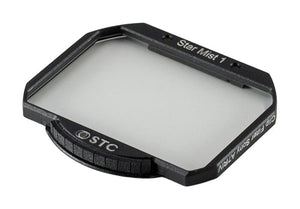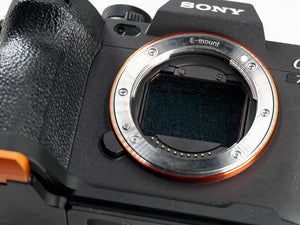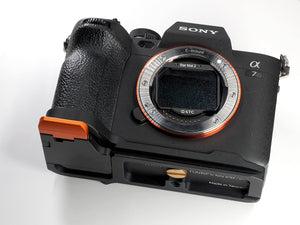Your Cart is Empty





The dual-purpose filter for astrophotography and portrait photography – the STC Star Mist filter, officially debuts in 2024!
In the era of digital photography, even when the night sky is filled with sparkling stars, digital cameras often capture them too sharply, making them less noticeable compared to the naked eye. Therefore, STC has developed a filter that incorporates "sub-micron transparent microcrystals" used in liquid crystal processes to create a specialized mist effect. This enhances highlights (making bright stars more prominent) and enlarges the halo effect, without excessively impacting the landscape or degrading image quality. This allows the stars to be more pronounced and the bright stars to appear larger and brighter, presenting a more beautiful starry sky.
Through testing, this characteristic also proves to be well-suited for portrait photography. Unlike Cine Mist (black soft) filters, the Star Mist filter provides a bright tone, softening overly sharp lines and reducing excessive contrast. When light is properly diffused, it can also enhance the halo effect, adding an airy ambiance, making it an excellent choice for the new generation of portrait photography filters!
Want to be ready for any lighting condition without bulking up your kit? Our clip filter is a natural fit. STC has engineered a clip filter that fits perfectly in the Sony A74, ZV-E1, A7CII.
Our patented inlay design has been upgraded so that you can quickly swap out the right filter as your shooting conditions change.
Compatible with:
For other Sony cameras:
Features
Installation Instructions
Due to varying QC standards across camera brands, even models of the same brand may have manufacturing tolerances. If the internal filter frame doesn’t fit properly, please contact STC support or headquarters. Do not force installation.
Disclaimer
STC’s Clip-in filters are innovative and rely on the camera’s internal structure for stability. Minor marks from installation may occur but do not affect camera functionality or warranty. STC will not cover these marks or offer compensation. Please consider this before purchasing if reselling your camera is a concern.
Shipping Notice
Our Products are manufactured in Taiwan(R.O.C), not China. After packaging the products in cartons, we ship them via international couriers such as DHL or OCS. Import taxes for each country are not included in our sales responsibilities; if you have concerns regarding customs duties, please contact your local customs office.
If a shipment is returned due to failure to pick up the package or refusal to pay customs duties, we will charge the additional return logistics fees. Order cancellations under such circumstances will also have the relevant costs deducted.

The soft light feature of Star Mist can react to light because transparent microcrystals with sub-micron particle size are added to the glass, allowing for high light gain and diffusion of directly incident light entering the glass, thereby achieving a slight reduction in contrast between light and dark.
The image shows the measurement of the finished glass of STC Star Mist, magnified x10 under a microscope with color light imaging. The result is obtained from a 1280um square area, and it is not that the glass itself is black and opaque.
The higher the number (1 > 2), the higher the distribution of sub-micron transparent microcrystals per unit area, resulting in more and stronger reactions under the same incident light. However, the performance in the photo reaction is not in proportionate intervals, so it cannot be simply calculated as a multiple.

In line with STC's focus on the needs of the professional market, we use high-transmittance technical glass as the raw material, and produce high-resolution optical glass with professional polishing machines. Irregular sub-micron particle grains are mixed into the glass, allowing the diffraction of light from bright areas through the particle material, making the faint starlight in the night sky appear brighter and more dazzling. This results in more captivating astrophotography works while maintaining the clarity of the landscape as much as possible.
When shooting starry skies with traditional White Soft or Plastic filters in the past, the landscape was also softened and contrast was reduced, resulting in more dramatic impact on image quality. To achieve better imaging quality, secondary exposure or digital stacking was often required. However, these issues do not exist when using the StarMist filter, allowing photographers to shoot more efficiently, including in time-lapse photography projects.
Camera: SONY A7SIII
Lens: Tamron 35mmF1.4(F045)
ISO speed: 6400
Aperture Value: F1.4
Exposure Length: 3.2 seconds
Equatorial mount: SWAT-350 Tracker
Location: Kumamoto City, Kumamoto, Japan
Photographer: Chihiro Yamaguchi
Filter Used: STC StarMist 1 Clip Filter Built-in Filter

Compared to Cine Mist or Black Mist, it offers better control of both direct and diffused light under strong daylight, without causing excessive or uncontrollable effects.
A modern diffusion filter designed for all-day convenience and versatility!
Follow Jacky Chang (Jian-Jian).
https://www.instagram.com/jimmy.c.c_photography/

STC Star Mist filter can also be used in portrait photography. Through practical shooting by professional photographers, it combines the advantages of both traditional White Soft and Black Mist filters.
Traditional White Soft filters are used to enhance highlights and reduce contrast, but the manufacturing structure can affect the overall image and overall improvement of shadow tones, creating a style but also significantly reducing sharpness. While Black Mist filters also reduce contrast and diffuse light, they do not emphasize highlights as much as White Soft filters do, and they do not excessively brighten shadows, resulting in a more subdued tone. Additionally, the decrease in sharpness is relatively low with Black Mist filters.
Star Mist shares similar characteristics with Black Mist filters but performs brighter in highlight gain. Similarly, under the material characteristics, the softening and overflowing of light are more pronounced, emphasizing the shooting subject and focus compared to black soft filters!

Photography is the art of using light, and the ability to add softer and more beautiful effects to light is what STC Star Mist does best.
Blending the most beautiful light with the ambiance of the scene to create a wonderful piece of creative photography is the unique perspective of the photographer.
Follow Yen Yen Cheng at: https://www.facebook.com/yanyanz2
Portrait rights consent MD: Yi Jing

From the image, it's clear to see that the bright stars around the Milky Way are significantly brightened and enhanced, displaying more captivating and beautiful colors. Meanwhile, the boats on the lake and the illuminated mountains still retain a certain level of detail and resolution. The STC Star Mist 1 filter is definitely your best companion for capturing beautiful starry scenes!
Date: 2024/2/12 AM 04:47
Camera: Sony A7M4
Lens: Sony FE 14GM
ISO Speed: 2000
Aperture Value: f1.8
Exposure Length: 20 seconds
Photographer: TingMao Chen
Filter Used: STC StarMist 1 Clip Filter Built-in Filter for Sony A74
Follow TingMao Chen: https://www.instagram.com/b516862005


All our filters use STC’s exclusive nanocoating technology for the best optical quality. Our Laser Shielding , Sensor Protector, Star Mist, Cine Mist, Neutral Density (ND), Astro (light pollution) series, IR-Pass (590nm/720nm/850nm) and UV-IR cut filters all carry a double-sided hydrophobic, anti-smudge and antistatic nanocoating to enhance or block transmission in all kinds of particular spectrums.

Facing the camera sensor upward, you can install the clip filter with only hand or our magnetic tooling (included) into the camera body in front of the shutter curtain. Screw on the lens and you can start shooting without extra setting needed. The clip filter stays firmly in front of your camera shutter so it can protect your sensor at the same time, it avoids dust and dirt while changing lenses outdoor. It’s easier and less risky to clean the clip filter than to clean your sensor.
STC Interchangeable clip filter made of aerospace grade aluminum alloy, metallic mist black anodizing and chamfer processing made it gently and firmly lies in camera body and will not abrade the inner parts. The patented glass assembling design is tolerable to thermal expansion which reduces glass flatness change, thereby preventing telephoto images focusing.

The Star Mist Filter effectively enhances bright stars, making them larger and more prominent, adding a striking touch to your images. It selectively highlights brighter stars without affecting dimmer ones, significantly enhancing the visual appeal of astrophotography, especially for nebula shots.
The Star Mist Filter is versatile and suitable for various photography themes, including portraits, fireflies, nightscapes, and more.
This article introduces the PENTAX version of the Star Mist Filter. For a detailed comparison and full review, please visit the blog.
https://www.falconkimo.com/?p=36524
Photo by Xu Zhan-Yuan
Notes
|